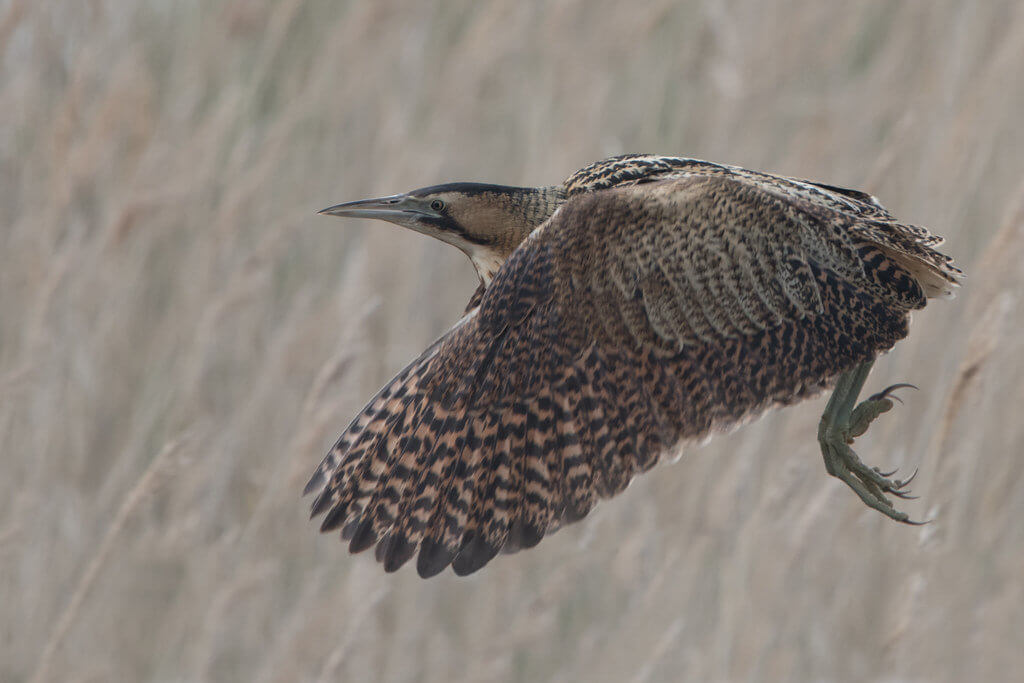
The booming song of the Bittern is not going to be heard in every garden in the land but probably this year in more than for a long time. The combination of less noise from road and air vehicles with a booming population (that’s a pun that few can resist) means that the extraordinary song of the Bittern, though hardly commonplace, is certainly much commoner.
In 1997 there were just 11 booming male Bitterns in the UK. We knew that because the ‘booms’ are individually distinct. If you record a singing, booming, Bittern and have a look at its sonogram then you can distinguish different males, and their booms are recognisable from year to year.
Last year there were 198 booming Bitterns in the UK – that’s an amazing recovery which has been brought about by a science-led conservation programme involving monitoring of numbers, research on what Bitterns really need, improved habitat management based on the research, and habitat recreation on quite a large scale. The RSPB led that recovery but many other organisations, notably the Wildlife Trusts, National Trust and Natural England were also involved and a large amount of the funding came from the EU (remember the EU?).
Bitterns are reedbed-nesting herons and they eat a wide variety of wetland species – large invertebrates, frogs and many fish species but they are quite keen on eels. They are difficult to see because they spend most of their lives in the long grass – in reedbeds where the reeds are much taller than the Bitterns. Also, Bitterns are the same colour as their reedbed habitat and if they are alarmed they will adopt an upright, still pose which makes them even more difficult to spot.
But their low-pitched booming songs are far-carrying, weird and highly evocative of the reedbed habitat.
Here are Bitterns from, first the Netherlands (with a loud Cetti’s Warbler after c24 seconds too):
… and from Hungary (with Dabchick and warblers) ;
… and from the UK (with a Great Spotted Woodpecker):
Quite a sound!
[registration_form]
Two Bitterns booming on Otmoor again this year. Several years successful fledgling. Thanks in good part to your planning whilst at the RSPB, Mark, and funding through the EU Life project.
On those scarce occasions when I hear a Bittern boom or those even scarcer occasions when I see one, I always think of the years when I didn’t and how wonderfully successful the conservation effort has been. Thank you all those who contributed.
Paul, it was a huge privilege to be involved in the development of the RSPB Reserve in Oxon. The work began in 1997 and two large pools excavated. We grew reeds from seed in a polytunnel and with help from local school children we planted tens of thousands of reeds by hand. The objective of attracting breeding bitterns and Marsh harriers was achieved within the 15yr target I believe. The number of Reed warblers exploded and with it the number of Cuckoos, often up to six calling males. A turtle dove has returned again this year. Access this year though is much restricted due to Corona virus.
Creating, or restoring wetlands, is one of the conservation measures that have the most immediate effect, and can show the general public wildlife like no other, more are needed.
Many years ago, when breeding Bittern could still be counted on one hand in this country, the
egg collector and Taxidermist W.E. Gibb, from Sheffield, was shown a nest and invited to take the eggs for his cabinet, he declined.
A denial of temptation worthy of the bible.